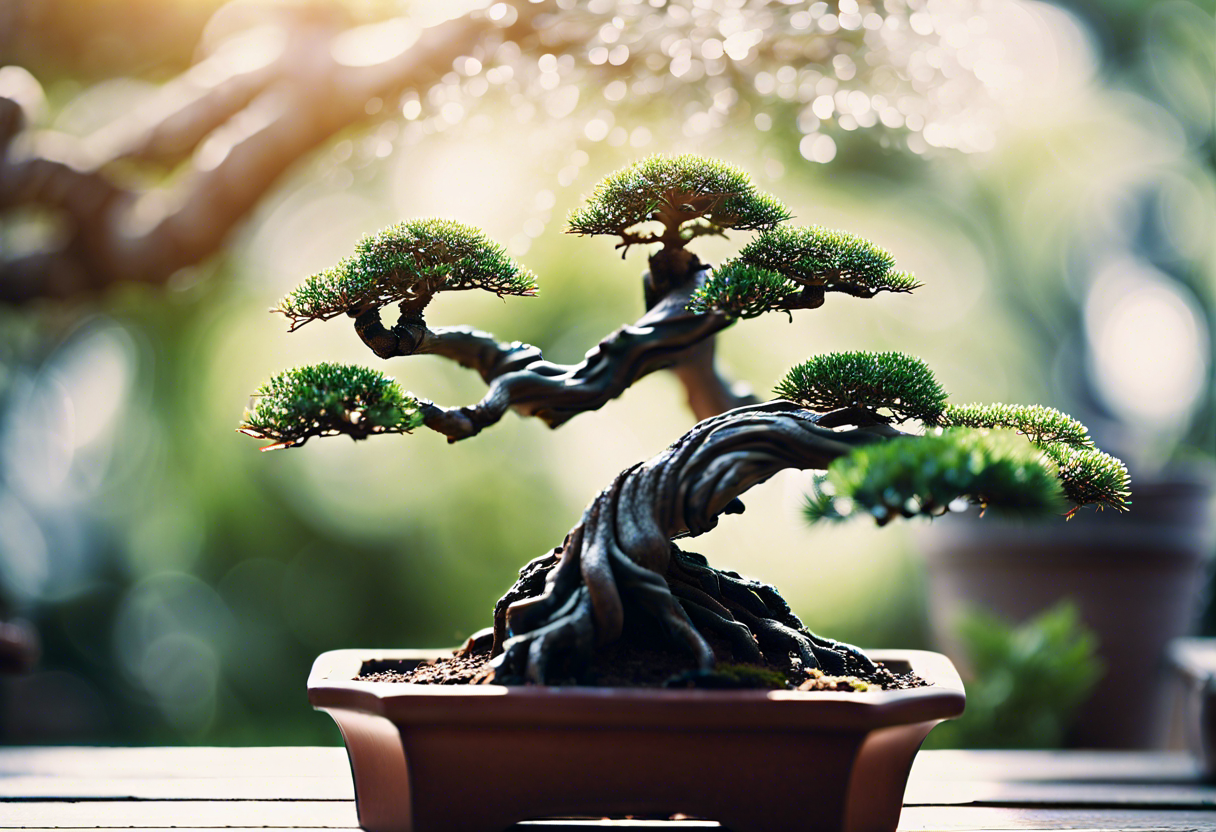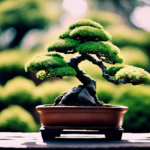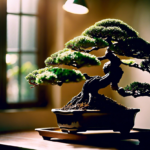Proper Bonsai Tree Watering: Essential Tips for Success
Keeping your bonsai tree properly hydrated is crucial for its health and overall appearance. Watering is one of the most essential aspects of bonsai care, as it directly impacts the tree’s growth, vigor, and resilience. Understanding the right techniques and timing for watering your bonsai tree is key to ensuring its longevity and beauty.
One of the essential bonsai tree watering tips is to water your tree thoroughly but infrequently. Overwatering is a common mistake that can lead to root rot and other diseases. Instead, it is better to water your bonsai tree deeply, allowing the water to completely soak the soil and reach the roots. However, it is equally important to let the soil dry out partially between waterings to prevent waterlogged conditions.
Another crucial factor to consider is the type of water you use. It is recommended to use room temperature water when watering your bonsai tree to avoid shocking the roots with cold or hot water. Additionally, using filtered or rainwater can help prevent the buildup of mineral deposits in the soil, which can harm the tree over time.
Understanding the specific water needs of your bonsai tree species is also essential. Different species have varying water requirements based on factors such as their native climate and root structure. Researching the water needs of your particular bonsai tree species can help you develop a customized watering schedule that meets its specific needs.
Monitoring the moisture level of the soil is key to ensuring proper bonsai tree watering. You can use a moisture meter or simply insert your finger into the soil to determine if it is time to water. Avoid watering on a strict schedule and instead rely on the actual moisture level of the soil to guide your watering routine.
Proper bonsai tree watering is essential for maintaining a healthy and thriving tree. By following these essential tips and developing a watering routine based on your tree’s specific needs, you can ensure that your bonsai tree flourishes for years to come.
Best Times of Day to Water Bonsai Trees
Watering your bonsai tree is a crucial aspect of its care routine, and timing plays a significant role in ensuring the health and vitality of your miniature tree. While the frequency of watering depends on various factors such as the species of the tree, the climate, and the season, the timing of watering can also impact the overall well-being of your bonsai. Understanding the best times of day to water your bonsai trees can contribute to their growth and longevity.
Factors to Consider
Several factors influence the best times of day to water your bonsai trees effectively. One of the essential considerations is the time of year. During the hot summer months, it is advisable to water your bonsai tree early in the morning to ensure that the tree has an adequate water supply to withstand the heat of the day. Conversely, in the colder winter months, watering your bonsai mid-morning on sunny days can help prevent freezing during the night.
Morning Watering
Watering your bonsai trees in the morning has several advantages. The cooler temperatures during the early hours of the day reduce the risk of water evaporation, ensuring that the roots receive an ample water supply. Morning watering also allows the tree to absorb the necessary moisture before the heat of the day sets in, enabling optimal nutrient uptake and overall growth.
Evening Watering
While morning watering is generally preferred, watering your bonsai trees in the evening can also be beneficial, especially during the scorching summer months. Evening watering helps replenish any lost moisture during the day and prepares the tree for the overnight period when water absorption is efficient. However, it is essential to avoid wetting the foliage to prevent fungal diseases, especially in humid environments.
Understanding the best times of day to water your bonsai trees is crucial for their health and growth. By considering factors such as the time of year, temperature, and individual tree species, you can establish a watering routine that promotes optimal moisture uptake and overall well-being for your prized bonsai tree. Regular monitoring of soil moisture levels and adjusting your watering schedule accordingly will help maintain a thriving and beautiful bonsai tree.
For more information on bonsai tree care and watering tips, visit Bonsai Empire website.
Signs of Overwatering Bonsai Trees
Proper watering is essential for maintaining the health and beauty of bonsai trees. While it is crucial to ensure that your bonsai tree receives an adequate amount of water, overwatering can be just as detrimental as underwatering. Understanding the signs of overwatering can help you prevent root rot and other potentially fatal issues for your bonsai tree.
One common sign of overwatering in bonsai trees is wilting leaves. While this may seem counterintuitive since wilting is often associated with underwatering, overwatered bonsai trees can experience wilting due to the suffocation of roots caused by excess water in the soil. The leaves may appear limp and lifeless, signaling that the roots are unable to absorb nutrients properly.
Another indication of overwatering is yellowing leaves. When bonsai trees receive more water than they can utilize, the roots become waterlogged, leading to a lack of oxygen uptake. This lack of oxygen can cause the leaves to turn yellow as the plant struggles to carry out photosynthesis effectively. Additionally, the yellowing of leaves can be accompanied by leaf drop, further compromising the health of the bonsai tree.
Mold growth on the soil surface is a visible sign of overwatering. Excess moisture creates a favorable environment for mold and fungi to thrive, indicating that the bonsai tree is being watered excessively. If you notice mold developing on the soil of your bonsai tree, it is crucial to adjust your watering habits to prevent further issues related to overwatering.
Furthermore, root rot is a severe consequence of overwatering that can ultimately lead to the demise of bonsai trees. Soggy soil deprives the roots of essential oxygen, promoting the growth of root-rotting fungi. As the roots decay, the bonsai tree loses its ability to absorb water and nutrients, resulting in stunted growth and overall decline.
To avoid overwatering your bonsai tree, it is essential to establish a consistent watering routine based on the specific needs of your plant species and environmental conditions. Monitoring the moisture levels of the soil, using well-draining soil mixtures, and ensuring proper drainage in your bonsai pots can help prevent the signs of overwatering and promote the overall health of your cherished bonsai tree.
By recognizing and addressing the signs of overwatering in bonsai trees promptly, you can safeguard the vitality and longevity of these exquisite miniature trees. Proactive care and attention to watering practices will ensure that your bonsai tree thrives and flourishes for years to come.
For more information on bonsai tree care tips, visit Bonsai Empire for expert guidance and resources.
Choosing the Right Soil for Bonsai Trees
When it comes to cultivating a healthy and thriving bonsai tree, one of the most critical components to consider is the type of soil in which it is planted. The right soil not only provides essential nutrients for the tree but also ensures proper drainage and aeration, which are crucial for the overall health of the bonsai. There are several key factors to keep in mind when selecting the ideal soil for your bonsai tree.
First and foremost, it’s important to choose a soil mix that provides excellent drainage. Bonsai trees are planted in small pots, which means that excess water can quickly accumulate and lead to root rot if the soil does not drain well. A well-draining soil mix will allow excess water to escape, preventing waterlogged roots and other issues associated with overwatering.
Additionally, the soil should have good aeration to ensure that the roots receive an adequate oxygen supply. Compacted soil can restrict airflow to the roots, impeding their growth and overall health. A soil mix that contains components like perlite, gravel, or coarse sand can help promote aeration and prevent compaction, creating an optimal environment for root development.
Another important consideration when choosing soil for bonsai trees is the pH level. Different species of bonsai trees have varying pH requirements, so it’s essential to select a soil mix that aligns with the specific needs of your tree. Most bonsai trees thrive in slightly acidic soil, with a pH range between 6 and 7. You can test the pH of your soil using a simple soil pH testing kit to ensure it falls within the appropriate range for your tree.
Furthermore, organic matter is a crucial component of a healthy bonsai soil mix. Organic materials like compost, peat moss, or bark chips can provide essential nutrients to the tree and improve the overall structure of the soil. These organic components break down over time, releasing nutrients that nourish the bonsai tree and promote healthy growth.
Selecting the right soil for your bonsai tree is a critical step in ensuring its long-term health and vitality. By choosing a soil mix that promotes good drainage, aeration, appropriate pH levels, and organic matter, you can create an optimal growing environment for your bonsai tree to thrive. Remember to repot your bonsai tree every few years to refresh the soil and provide your tree with the best possible growing conditions.
For more information on soil selection for bonsai trees, check out this website.
Watering Techniques for Indoor Bonsai Trees
When it comes to caring for indoor bonsai trees, proper watering is essential for their health and longevity. Indoor bonsai trees require a different watering approach compared to outdoor bonsai trees due to variations in light, temperature, and humidity levels. Here are some valuable watering tips to keep your indoor bonsai trees thriving:
-
Check the Soil Moisture: Before watering your indoor bonsai tree, always check the moisture level of the soil. Stick your finger about an inch into the soil; if it feels dry to the touch, it’s time to water. Avoid watering on a predetermined schedule as the watering needs can vary depending on factors like tree species, pot size, and environmental conditions.
-
Use the Right Watering Technique: When watering your indoor bonsai tree, it’s crucial to do it gently and evenly to ensure thorough saturation. A recommended technique is to water in a circular motion around the base of the tree until water starts to seep out of the drainage holes at the bottom of the pot. This method helps prevent dry pockets of soil and ensures the entire root system receives adequate hydration.
-
Avoid Waterlogging: Overwatering is a common issue that can lead to root rot and other complications in indoor bonsai trees. To prevent waterlogging, make sure the pot has proper drainage holes to allow excess water to escape. Additionally, consider using a moisture meter to accurately gauge the soil moisture level and avoid overwatering.
-
Consider Environmental Factors: Indoor bonsai trees are sensitive to changes in their environment, so it’s essential to adjust your watering routine accordingly. Factors such as temperature, humidity, and air circulation can impact the tree’s water requirements. During the winter months when indoor heating can dry out the air, you may need to increase watering frequency or use a humidity tray to maintain adequate moisture levels.
-
Use Room Temperature Water: When watering your indoor bonsai tree, avoid using water that is too hot or too cold, as extreme temperatures can shock the roots. Opt for room temperature water to prevent stressing the tree and ensure optimal absorption by the roots.
By following these watering techniques, you can help your indoor bonsai tree thrive and display its natural beauty year-round. Remember that each bonsai tree is unique, so it’s essential to observe and adjust your watering practices based on the specific needs of your tree.
For more information on indoor bonsai tree care tips, visit Bonsai Empire{:target="_blank"}.
Conclusion
Proper bonsai tree watering practices is crucial for ensuring the health and longevity of these unique miniature trees. By understanding the significance of adequate hydration, determining the optimal times to water, recognizing signs of overwatering, selecting the right soil, and mastering indoor watering techniques, bonsai enthusiasts can cultivate thriving plants that showcase the beauty and artistry of this ancient horticultural tradition.
Watering is a fundamental aspect of bonsai care, as it directly impacts the tree’s overall well-being. Providing the correct amount of water at the right intervals is essential for sustaining proper growth and development. By adhering to a consistent watering schedule, bonsai enthusiasts can prevent issues such as dehydration or root rot, which can compromise the tree’s health and vitality.
Determining the best times of day to water bonsai trees is a key consideration for maintaining optimal moisture levels. Watering in the early morning or late afternoon allows the soil to absorb moisture efficiently without the risk of excessive evaporation. Avoiding midday watering helps prevent water loss due to evaporation caused by the heat of the sun, ensuring that the tree receives an adequate supply of water for sustained growth.
Overwatering is a common mistake that can have detrimental effects on bonsai trees. Signs of overwatering include yellowing or browning of leaves, soft or mushy roots, and a musty odor emanating from the soil. By paying close attention to these indicators, bonsai enthusiasts can adjust their watering practices accordingly and prevent the risk of waterlogged soil, which can suffocate the roots and lead to irreversible damage.
Selecting the right soil mixture is essential for promoting proper drainage and aeration, which are crucial for bonsai tree health. Well-draining soils with a balanced combination of organic and inorganic components help prevent waterlogging and root suffocation. Choosing a soil mix that suits the specific needs of the bonsai species can significantly enhance growth and vitality, fostering a strong and resilient root system.
Indoor bonsai trees require special consideration when it comes to watering, as environmental conditions indoors can differ from outdoor settings. Monitoring factors such as humidity levels, temperature, and air circulation is essential for adapting watering techniques to suit the unique needs of indoor bonsai trees. Using a watering can with a fine nozzle and watering the soil directly while avoiding the foliage helps prevent issues such as fungal infections and leaf damage.
By incorporating these bonsai tree watering tips into your care routine, you can create an environment that promotes the health and vibrancy of your miniature trees. Proper watering practices, combined with attention to detail and a genuine passion for bonsai cultivation, will help you cultivate beautiful and resilient bonsai specimens that embody the artistry and tradition of this ancient horticultural practice.


